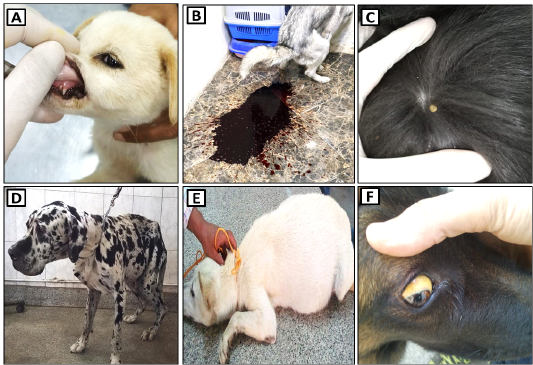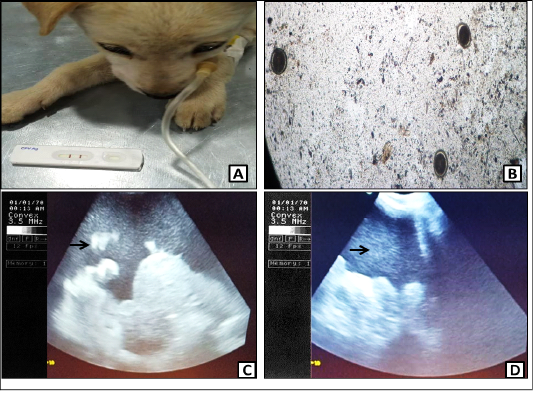Clinical and Hemato-biochemical Studies on Canine Anemia
Clinical and Hemato-biochemical Studies on Canine Anemia
Mohamed Saeed M. Hassan¹, Hitham Abdel-Saeed1*, Kawkab Abd El Aziz Ahmed2, Ossama Mohamed Abdou1
Clinical pictures of common causes of anemia in dogs. A: severe pale oral mucous membrane in mixed breed anemic puppy. B: severe bloody diarrhea associated with parvoviral infection in six months old Husky puppy. C: adult tick infestation in black coat German shepherd dog. D: progressive weight loss with prominent decrease in body condition scoring in two years old Great Dane with malnutrition. E: abdominal distention (Ascites) due to chronic hepatitis in three years old mixed breed mongrel dog. F: yellowish discoloration of episclera and mucous membranes due to hepatic jaundice that confirmed later with laboratory work.
Advanced diagnostic tools used for determination of the definite cause of anemia in dogs. A: in-clinic rapid antigen test kit showing positive infection with parvovirus in two months old Golden Retriever puppy. B: Toxocara canis infection (ova) in four months old mixed breed puppy (4 X). C: ultrasonographic view showing hyperechogenic hepatic mass (lymphosarcoma) in five years old German shepherd dog (arrow). D: ultrasonographic view showing hyperechoic hepatic tissue (arrow) due to chronic hepatitis in three years old Golden Retriever bitch.








